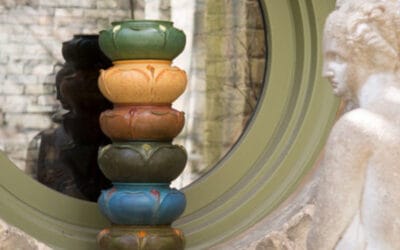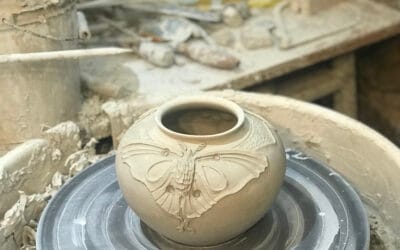Slip Casting – The Chocolate Bunny Method
Similar to making a hollow chocolate bunny, slip casting relies on liquid clay (slip) drying on the inside of a plaster mold. When the mold is removed a hollow form remains. The advantage of this method is that it allows the craftsperson to make hundreds of identical forms. However, slip casting does not accommodate complex relief with ‘undercuts’ – indentations or protrusions in a shape that will prevent its withdrawal from a simple two-part mold – which limits the use of designs with high relief. Also, slip casting molds degrade over time resulting in designs that are less crisp and lack definition.

Wheel Throwing & Sculpting – The Ephraim Method
High relief is a signature feature of our work at Ephraim. For this reason, slip casting is out of the question. Every single one of our forms begins as a lump of clay, thrown into a vase, mug, or bowl on the potter’s wheel and sculpted one-at-a-time. While this method gives us the maximum amount of creative freedom in our forms and sculpture, the trade-off is that there is some variance in each piece. We embrace this as a delightful aspect of our handmade work and hope that you see it that way too 

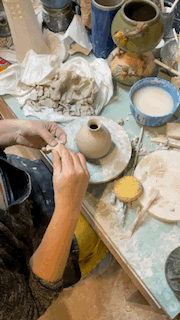
Measure, Measure, Measure
An important part of our design work is codifying the measurements of a new design so that it can be repeated with accuracy. This process involves sketching the piece, measuring it at the foot, belly, shoulder, lip, etc., and calculating how much clay to use. This is key because the clay shrinks in the kiln, so we must account for shrinkage.
Above, the throwing sheet for the Faceted Bud Mug is referenced on a weekly basis as this is one of our most popular functional pieces. And, yes, even our mugs are thrown and sculpted one-at-a-time!
Our potters always check the width and height and compare the measurements to their throwing sheets.
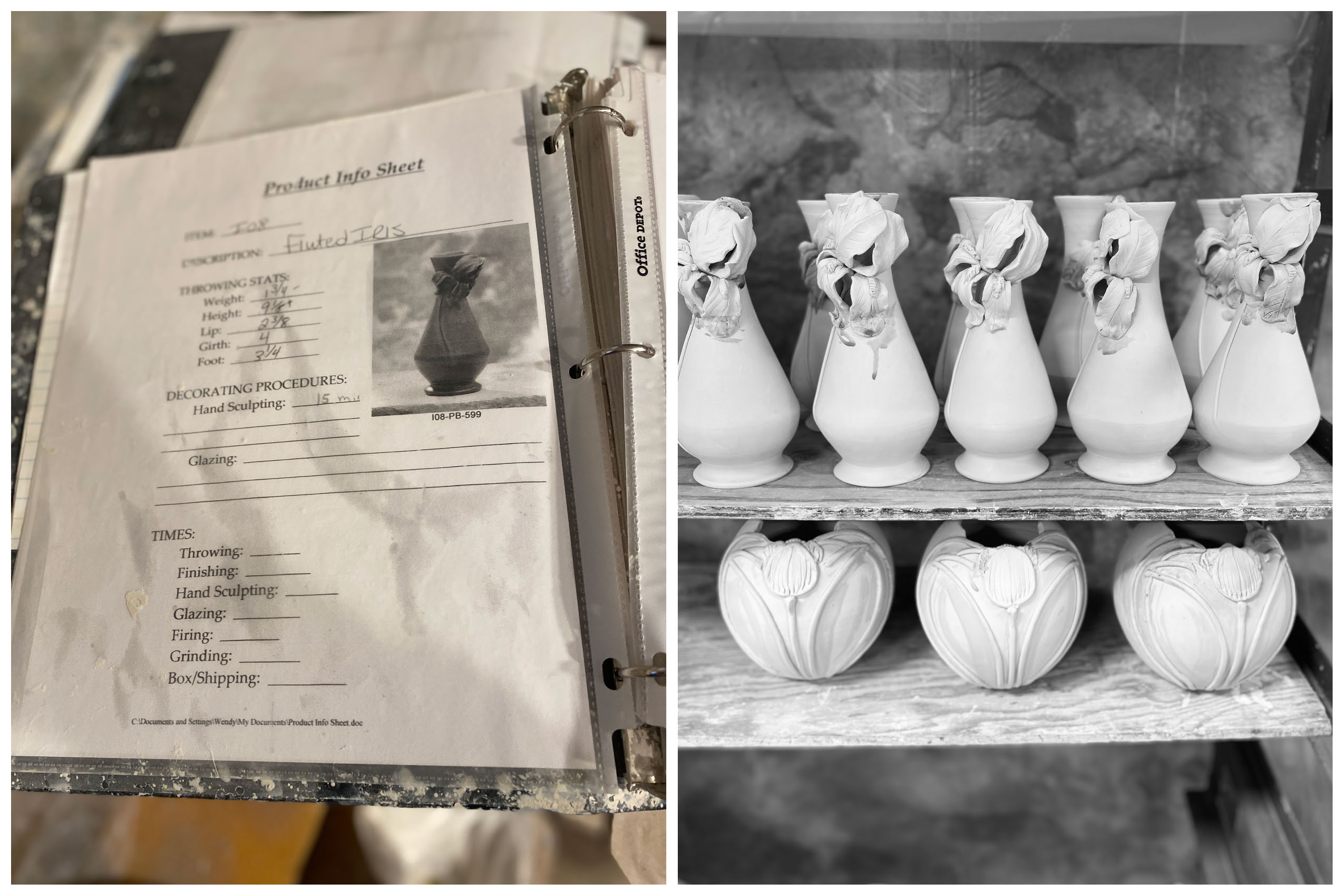
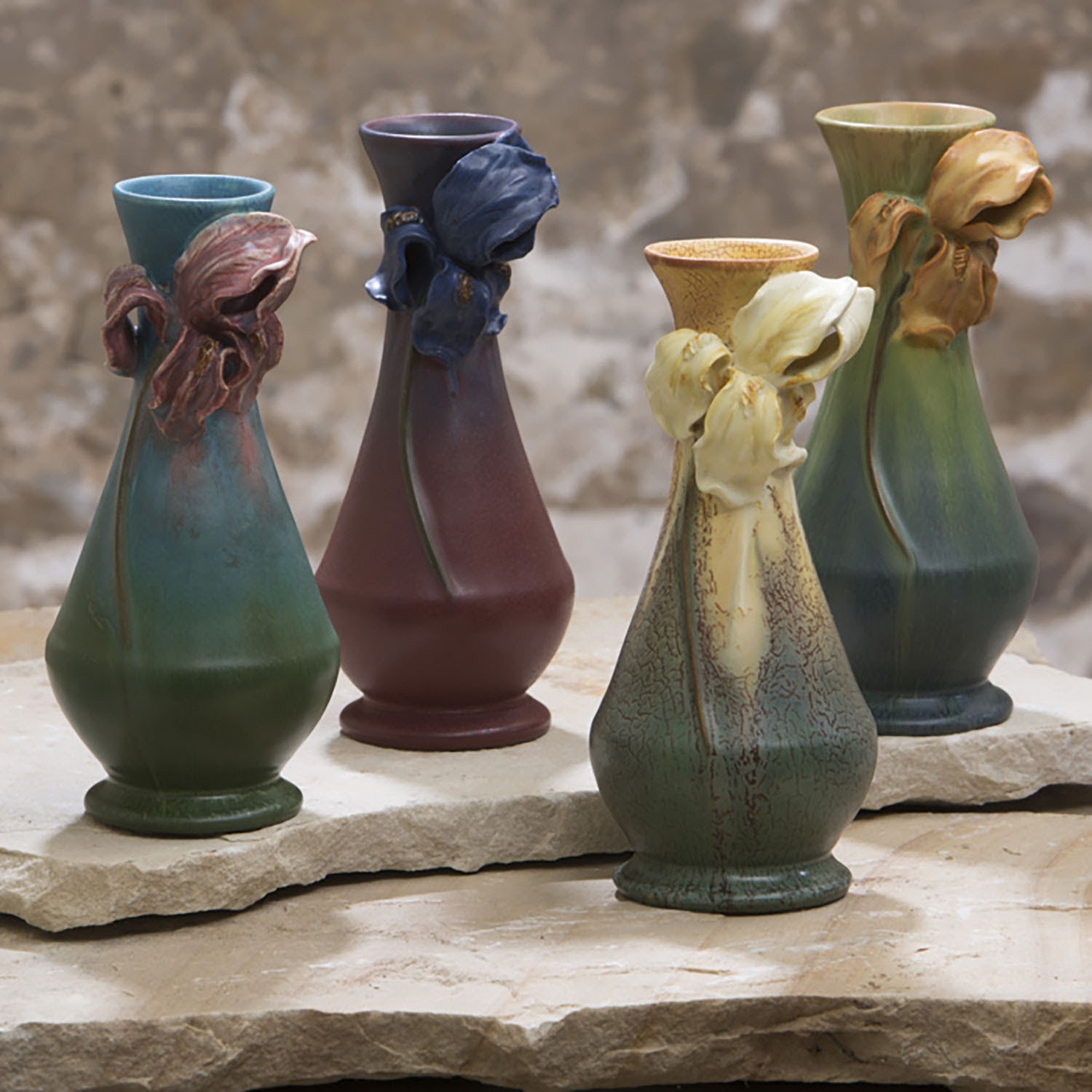
The Fluted Iris Vase (retired) is a great example of a design that could not be made using the slip cast method due to the high relief sculpture of the iris flower. At a glance these groupings may look identical, but if you look closely, you will see that each one is unique.
SUBSCRIBE to our weekly email –like this one–for product alerts, promotions and updates from our Studio.





